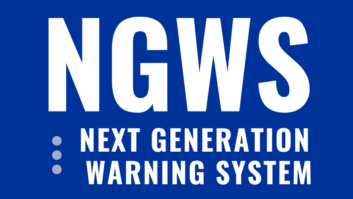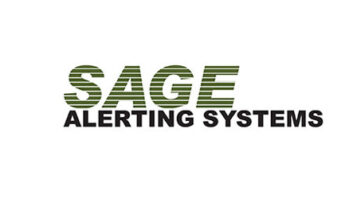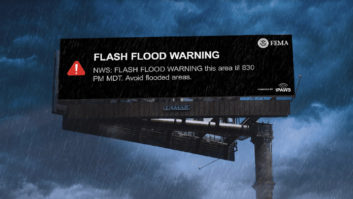A new company called America’s Emergency Network LLC has announced an advanced emergency information (AEI) network using ATSC 3.0/NextGen TV combined with FM RDS.
Co-founder and President John Lawson is also executive director of the AWARN Alliance.
“With the introduction of AEN, authorized alert originators such as the National Weather Service, ShakeAlert and local emergency managers will be able to send actionable, geo-targeted rich-media messages even when power, cellular and internet fail,” the company said in a press release.
At the NAB Show, Tolka TV is demonstrating an AEN Alert hybrid RDS and ATSC 3.0 receiver dongle at the booth of Atlanta DTH, #W7903.
[Visit Radio World’s News and Business Page]
AEN said it plans several pilots in coming months and will build out its product line. It will enable the AEI with NextGen TV and sell alert receiver devices; it also plans to offer ad-supported reality programming from emergency managers and a fee-based library of licensed emergency manager-generated content. AEI is an industry term for ATSC 3.0-enabled emergency messaging.
“At the NAB Show and in days after, AEN is meeting with potential strategic partners in the broadcasting, infrastructure and receiver industries,” it said.
It will market AEN Alert as a “rich-media-capable emergency notification system” to deliver emergency messages to residents, schools, hospitals and commercial and industrial facilities, including information such as evacuation routes, flood map and video from authorized public officials.
“AEN marries ATSC 3.0 to the existing Alert FM, which uses the Radio Data System in 12 states,” said the company. “Alert FM serves an extensive network of local alert originators, which is their current customer base, and distributes through FM radio stations. Alert FM is licensed by USGS to deliver ShakeAlert earthquake warnings on the West Coast in five seconds or less.
“The integrated FM/ATSC 3.0 system will provide multiple redundant backup transmitters connected by satellite to provide secure transmission of a single point-to-multipoint messaging, layered by geo-targeted groupings.”







